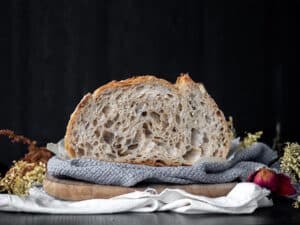Based on the five human senses of taste, smell, sight, hearing and touch, sensory analysis in breadmaking is used to quantify taste notions that are difficult to define by means of simple non-scientific assessment. Since it calls upon the human perceptions, it therefore relies on factors that are not only inherent in breadmaking, but also linked to each panellist’s own level of sensitivity.
Bread: a developing key factor
Bread is a fresh and complex product that is constantly evolving. Its smell, aromas and texture change rapidly after baking. It is therefore very important to choose the moment of tasting wisely, since this will impact strongly upon the perception of the product (e.g. assessment of softness in brioche at days 7, 14 and 21).
The complex impact of ingredients at process
Modifying a single ingredient, or single stage in the breadmaking process, can have many repercussions on the perception of the product under examination.
- Raw ingredients and their implementation in the recipe impact to a large extent upon the visual appearance of a loaf (colour of the crumb, crust, or air holes), or the smell and the aroma of the loaf and bakery goods generally. To a lesser extent, they also modify the texture, which is also assessed by employing the senses of touch (elastic or moist crumb) and hearing (crustiness).
- The process, and especially the key stages in breadmaking, namely mixing, fermentation and baking, also impact upon the visual, olfactory and aromatic characteristics of a loaf of bread (‘taste’), as well as its texture (softness).
Variability in perception thresholds
In order to limit variability in the different individuals’ perceptions, at least 12 panellists must be assembled to obtain a representative average for a classic profile, smoothed of any fluctuations.
Varying human perceptions
Each individual has a distinct sensitivity to the different flavours and aromas. There is therefore individual variability within the sensory analysis panels composed of consumers or experts (see Article What are the bases for sensory analysis?).
Societal influences
The cultural environment also impacts upon chewing efficiency, with the masticatory profile of consumers varying from one country to another. The textures of food products will therefore be rated or rejected depending on the masticatory profile of each individual.
Complex sensibilities
The assessment of softness, for example, is a sensory experience, which calls upon the sense of touch, mouth-feel, sight, and also depends upon storage conditions. Hence the varying preferences in terms of softness depending on the panel’s level of expertise (lay or experienced) or culture.




